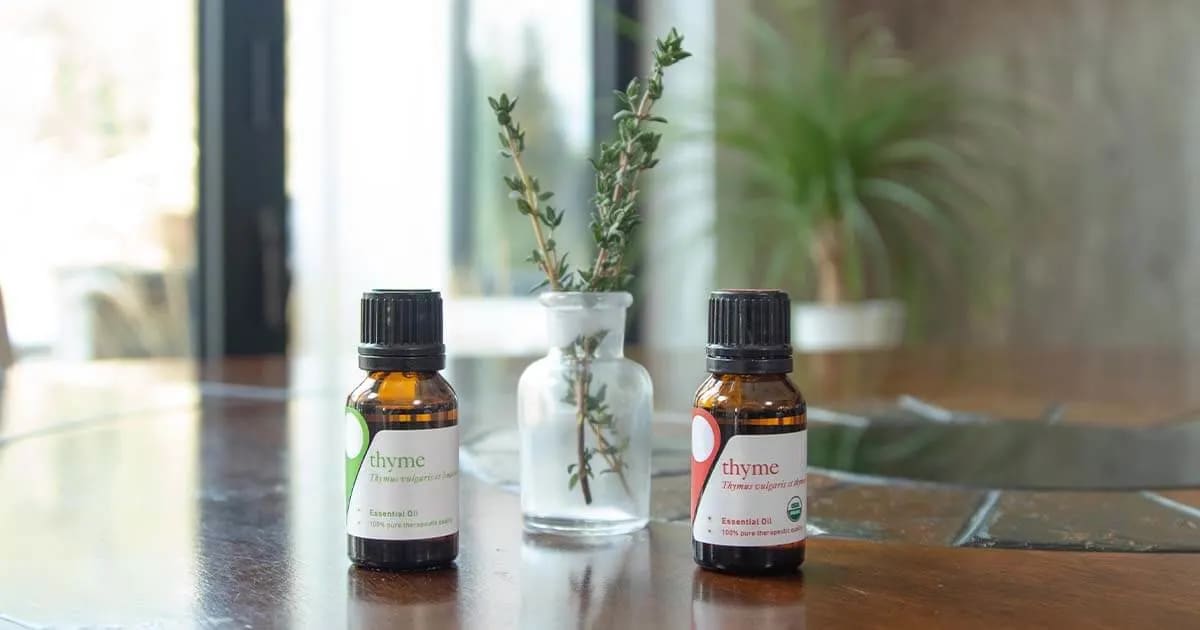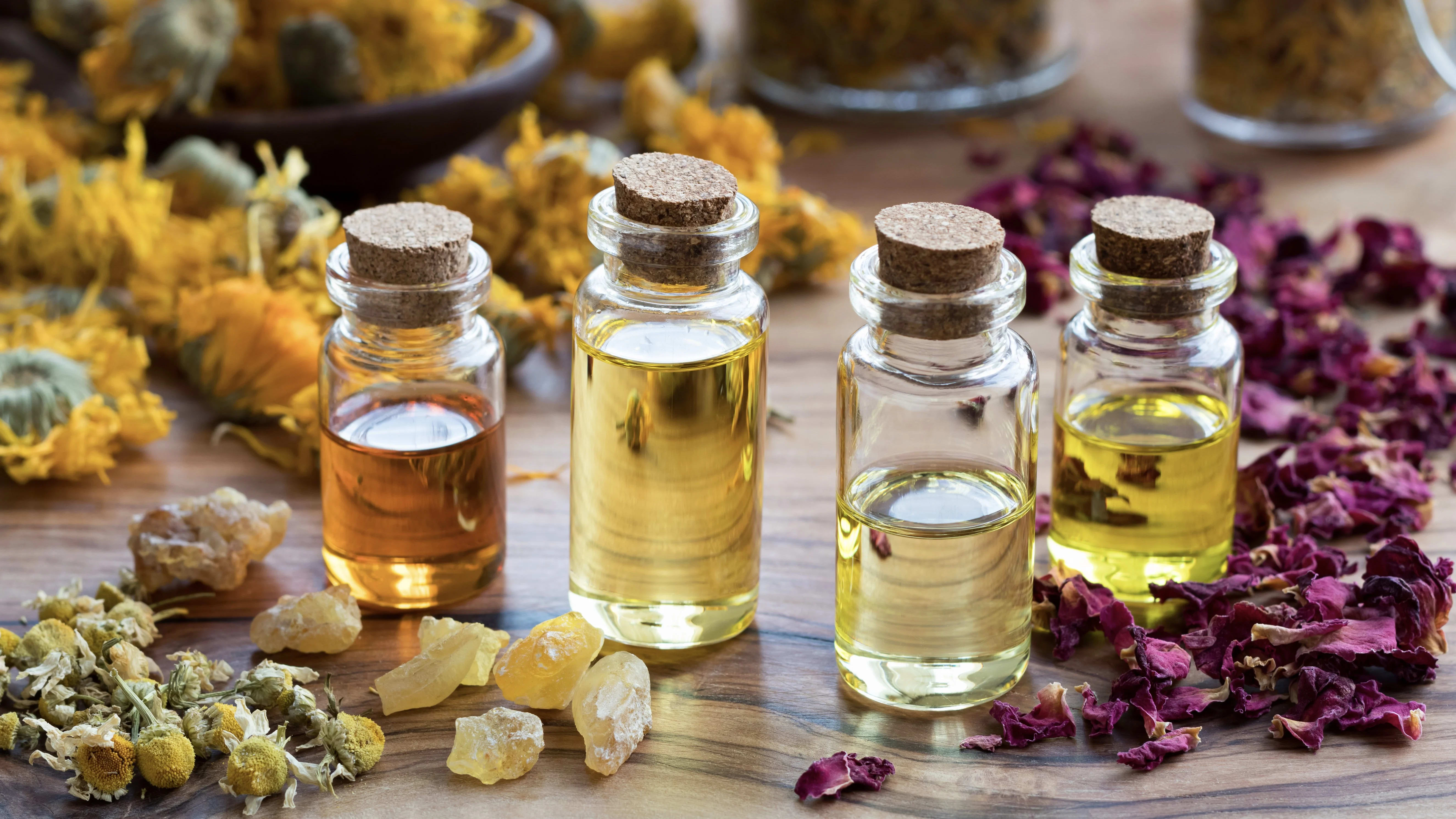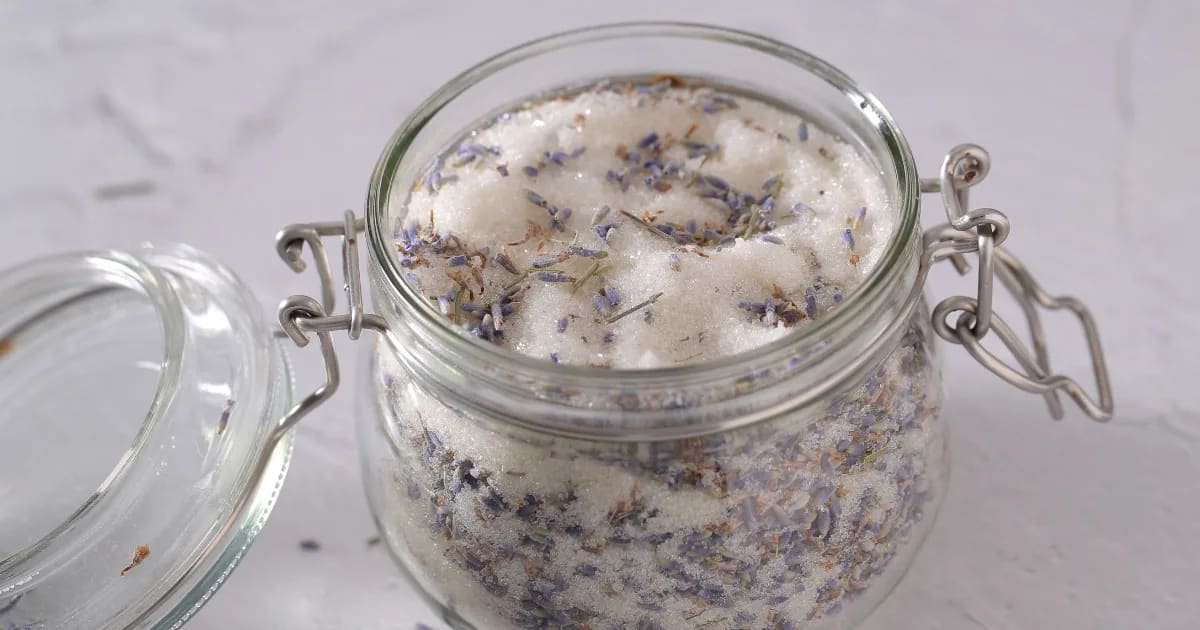6 Essential Oils Proven to Help Calm Inflammation

Inflammation is the root of many common health problems.
In some instances, inflammation is your body’s way of speeding up the healing process—like after you twist your ankle. The area might be painful, warm, and red.
In other cases, inflammation doesn’t go away when it’s supposed to, or it’s present throughout your body chronically. Harvard Health reports that chronic inflammation is:
. . .associated with heart disease, diabetes, cancer, arthritis, and bowel diseases like
Crohn’s disease and ulcerative colitis.
Are natural products proven to calm inflammation?
“Inflammation” has turned into something of a buzzword for the natural health industry. Take a stroll through the health and supplement aisle of your natural grocery store, and you’ll find a number of products claiming to address it.
But not all of them are proven to calm inflammation by research.
That’s why we’re happy to share a research study that explains how six essential oils help reduce inflammation! This study was published in the Journal of Lipid Research. Researchers discovered six essential oils that suppress an enzyme that promotes the inflammatory response.
This enzyme is called “COX-2.
How essential oils suppress COX-2
The essential oils suppressed COX-2 by activating natural “receptors” in the body that control the inflammatory response. These receptors are called PPARs. (Their actual name is peroxisome proliferator-activated receptors . . . but let’s just call them PPARs!)
And here’s a fun thing the researchers pointed out—another substance that helps suppress COX-2 by activating PPARs is resveratrol, a polyphenol found in red wine.
So these essential oils behave in a similar way as resveratrol . . . at least in this instance.
How did the researchers discover this?
Basically, they grew human cells in a lab and stimulated the COX-2 inflammatory response, then tested the effects of essential oils.
Thyme oil was the most impressive. The study doesn’t mention what chemotype of thyme was used, but it was probably thyme ct carvacrol (Thymus vulgaris ct carvacrol). We can infer that because the researchers ran a GC/MS test on the essential oil. That allowed them to identify the individual chemicals naturally present in the oil. It contained over 58% carvacrol.
Thyme oil suppressed COX-2 by about 75%.
And when they isolated carvacrol and tested it alone? It suppressed COX-2 by a whopping 80%!
They also had impressive results from thymol—another natural chemical found in thyme oil. As a molecule, thymol is a structural isomer of carvacrol. This means that it’s closely related to carvacrol. The researchers didn’t count it as being unique enough in the research, so didn’t focus on it as much.
Five other essential oils that earned gold stars for suppressing COX-2 were:
Clove bud (Syzygium aromaticum/Eugenia caryophyllata)
Rose (Rosa x damascena)
Eucalyptus (Eucalyptus globulus)
Fennel (Foeniculum vulgare)
Bergamot (Citrus bergamia)
However, not all of these oils are proven to calm inflammation in the same way.
As the researchers said:
Statistically significant activations of PPARs were not found with rose or eucalyptus oils
. . . Indicating that some natural chemicals in essential oils act as COX-2 suppressors
but not PPAR agonists. Further identification of the chemical compounds in these
essential oils is under investigation.
That means they’re working on more research to prove exactly how essential oils calm inflammation. Hooray!
 Safety notes for 6 inflammation-calming oils
Safety notes for 6 inflammation-calming oils
A very high concentration of carvacrol was used to get these powerful anti-inflammatory results in a lab.
But that doesn’t mean you should put a lot of thyme ct carvacrol essential oil on your skin the next time you’re in pain. The same holds true for other carvacrol-rich oils (like oregano,
Origanum vulgare, which contains nearly 75% carvacrol!), and for thyme ct thymol.
Carvacrol and thymol are from the phenol chemical family. They can seriously irritate skin and mucous membranes!
At Aromahead, we recommend diluting carvacrol- and thymol-rich essential oils at 1–2% for skin application. We also like to blend them with skin-soothing oils, like lavender (Lavandula angustifolia). Whether we’re using these potent oils on our skin or inhaling them, we use a low drop count, and limit their use to only short-term, urgent needs.
Carvacrol can also interact with drugs and medications. It’s a blood thinner. Limit its use if you’re on anticoagulant medication, have a clotting or bleeding disorder, or if you’ve going through surgery, childbirth, or had a peptic ulcer or hemophilia.
The other five essential oils shared above are:
Clove bud (Syzygium aromaticum/Eugenia caryophyllata)
Rose (Rosa × damascena)
Eucalyptus (Eucalyptus globulus)
Fennel (Foeniculum vulgare)
Bergamot (Citrus bergamia)
Some of these oils come with their own safety concerns.
Like thyme ct carvacrol and thyme ct thymol, clove bud should be used at a low percentage — a maximum of .5 %.
Bergamot oil is phototoxic, meaning it can cause burning and blistering in sunlight. To be safe, use no more than 2 drops per 1 oz (30 ml) of carrier in topical blends (or only use bergamot for inhalation).
Fennel should only be used at about 2.5% (10 to 13 drops in 1 oz/30 ml of carrier), and should be avoided altogether during pregnancy and breastfeeding.
A few more notes!
Another research study, which was published in BioMed Research International, examined the role of PPARs in calming inflammation.
They determined that PPAR activators may be more effective in the initial phases of inflammation. Instead of stopping an active, painful case of inflammation, they help prevent more inflammation from arising.
If you’re going to use these six essential oils in natural pain relief recipes, reach for them before the pain sets in, or be aware that they may take a little longer to help existing inflammation calm down.
What does this research mean for you?
The researchers stated:
Our results may be important in understanding the anti-inflammatory and
anti-lifestyle-related disease* properties of carvacrol, although further studies in vivo will
be necessary to address the physiological significance of our findings.
* By this, they’re referring to diseases like cardiovascular disease, diabetes, and stroke.
For us aromatherapists, the research indicates that we can include thyme essential oil—thyme ct carvacrol or thyme ct thymol—in our blends to calm inflammation and soothe the pain.
These blends are best used in the short term. So turn to them for only your strongest pain relief needs, and be sure to use a low dilution no higher than about 1%. That’s about 5 drops of essential oil per 1 oz (30 ml) of carrier.
Pay attention to your body’s response to these oils. If you start to notice redness or irritation, discontinue use. Wash the area with soap and water and then apply a carrier. Plain jojoba (Simmondsia chinensis) would work great!
REFERENCES
Hotta, M., Nakata, R., Katsukawa, M., Hori, K., Takahashi, S., Inoue, H. (2010) Carvacrol, a component of thyme oil, activates PPARa and y and suppresses COX-2 expression. Journal of Lipid Research. 51, 1, P132-139. doi.org/10.1194/jlr.M900255-JLR200
Tisserand, R. and Young, R. (2014) Essential Oil Safety 2nd Edition. Edinburgh: Churchill Livingstone.
Youssef, J., Badr, M. (2004) Role of Peroxisome Proliferator-Activated Receptors in Inflammation Control. BioMed Research International. V2004. 927276. doi.org/10.1155/S1110724304308065





